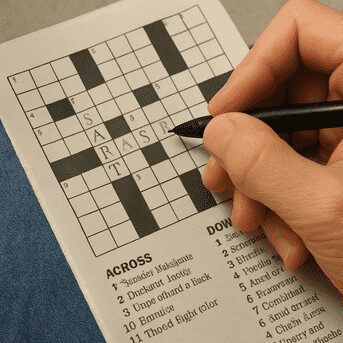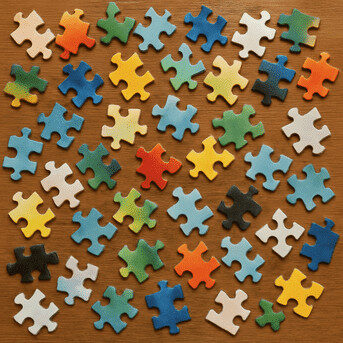Impact of the New York Times Games Strike
Hello there! If you’ve been tuned into the latest happenings around the New York Times Games, you might have noticed quite the buzz recently. Yes, we’re diving into the New York Times Games strike, a hot topic that’s been causing ripples across various communities. Whether you’re an avid puzzle enthusiast, a budding novelist, a seasoned content marketer, or a diligent graduate student, understanding the nuances of this strike can offer profound insights into how disruptions can ripple through creative industries. So, let’s embark on this exploration together! Check out PELUANG77 to know more
The New York Times Games has long been a beloved institution for puzzle aficionados, offering a diverse array of challenges from crosswords to sudoku and more. But beneath the surface of these enjoyable puzzles, there have been underlying issues that have sparked significant unrest.
A Call for Better Working Conditions
The creators of these puzzles are not just cogs in a machine; they are artists in their own right, crafting intricate challenges that captivate millions. However, their working conditions have not always reflected the value they bring. Over time, grievances regarding inadequate working environments have grown. These include unrealistic deadlines, lack of necessary resources, and an overall feeling of being undervalued.
The Demand for Fair Compensation
Beyond working conditions, fair compensation has been a pivotal issue. Puzzle creators have argued that the financial rewards they receive are not commensurate with the effort and creativity they pour into their work. This disparity has led to growing discontent, with creators feeling that their contributions to the New York Times Games are not being adequately recognized or remunerated.
Seeking Recognition and Voice
Recognition, or the lack thereof, has been another driving force behind the strike. These creators often work behind the scenes, their names seldom known to the public. Yet, their puzzles are a daily staple for many. The strike is a powerful reminder of the need for these individuals to be acknowledged and have their voices heard in a larger conversation about creative work.
What Does This Mean for Puzzle Enthusiasts?

For those who start their day with a New York Times crossword or wind down with a sudoku, the strike poses some questions about the future of these puzzles.
Temporary Interruptions and Opportunities
During the strike, there may be temporary interruptions or changes in the availability of your favorite puzzles. While this might be a bit frustrating, it’s also a chance to explore other puzzle games or even dive into creating your own. This disruption could lead to discovering new interests or honing your skills in puzzle design.
Broadening Your Puzzle Horizons
With the usual puzzles potentially on hold, consider this a moment to broaden your puzzle horizons. There are numerous other platforms and independent creators offering unique and challenging puzzles. Exploring these alternatives can not only fill the gap but also provide fresh and exciting experiences.
A Creative Spark in Disguise
Disruptions often ignite creativity. As a novelist, content marketer, or student, consider how this pause can inspire new ideas or projects. Reflect on your current endeavors: Are there aspects where you feel constrained or undervalued? Use this time to strategize ways to overcome these challenges and infuse your work with newfound passion.
Lessons Learned from the Strike
Every major event, like the New York Times Games strike, offers lessons that extend beyond its immediate impact. These insights can be invaluable for anyone navigating creative fields.
1. The Power of Collective Action
When individuals unite for a shared cause, their collective voice can be a powerful force for change. This is a crucial lesson for anyone involved in collaborative efforts, be it in creative projects or organizational settings. Unity not only strengthens your position but also fosters an environment where diverse ideas can thrive.
2. Valuing and Recognizing Creativity
The strike underscores the critical importance of valuing creative contributions. As a content marketer or any creative professional, it’s vital to ensure that your work is genuine and that all contributors are acknowledged. This not only enhances the quality of the work but also builds a culture of respect and appreciation.
3. Embracing Change and Adaptability
Life’s unpredictable nature is akin to the twists and turns of a novel. Embracing change and being adaptable are key skills in navigating life’s challenges. Disruptions like this strike can serve as catalysts for personal and professional growth, encouraging you to step out of your comfort zone and embrace new opportunities.
How Can You Support the Creators?
Supporting the creators of the New York Times Games during this strike is not only a show of solidarity but also a step towards fostering a fairer creative industry. Here are some ways to get involved:
Staying Informed and Engaged
Keep abreast of the latest developments regarding the strike. Understanding the creators’ demands and the reasons behind the strike can help you form an informed opinion and support their cause more effectively.
Amplifying Their Voices
Use your social media platforms to share information about the strike. Raising awareness can help garner more support and put pressure on organizations to address the creators’ concerns. Your voice can be a part of a larger chorus advocating for change.
Exploring and Supporting Alternatives
While the strike is ongoing, take the time to explore other puzzle platforms and support independent puzzle creators. This not only helps diversify your puzzle experience but also provides encouragement to creators who might be working outside mainstream avenues.
Wrapping It Up
The New York Times Games strike is a pivotal event that highlights the importance of recognizing and valuing creative work. Whether you’re solving puzzles, crafting stories, or creating content, it’s crucial to appreciate the effort and dedication that goes into these endeavors.
Remember, every challenge presents an opportunity to learn and grow. By supporting the creators, embracing adaptability, and continually pushing the boundaries of creativity, we can contribute to a more equitable and vibrant creative landscape.
Thank you for joining me on this exploration, and here’s to fostering creativity in all its forms!


